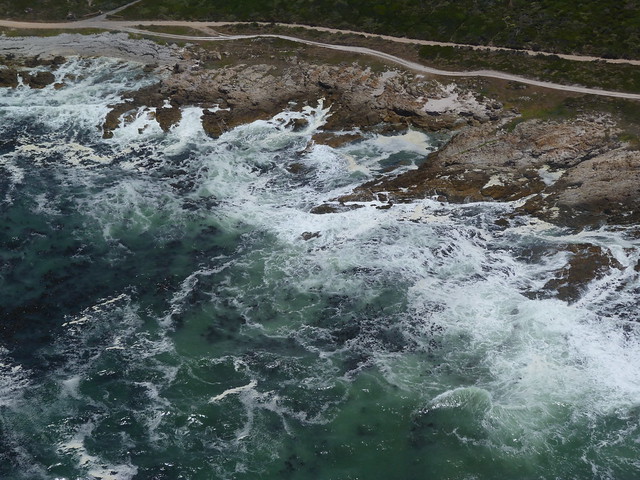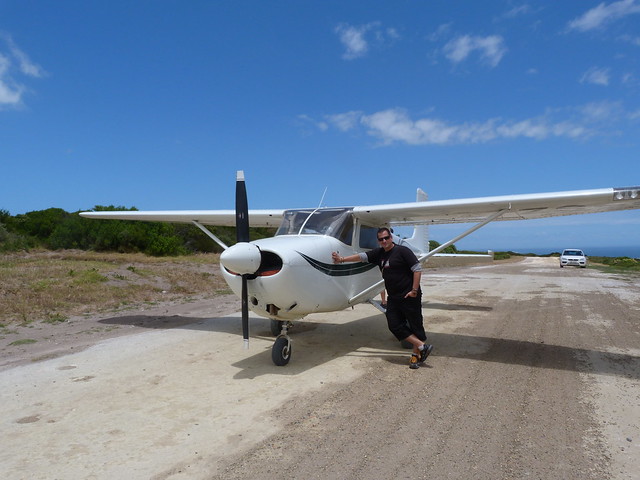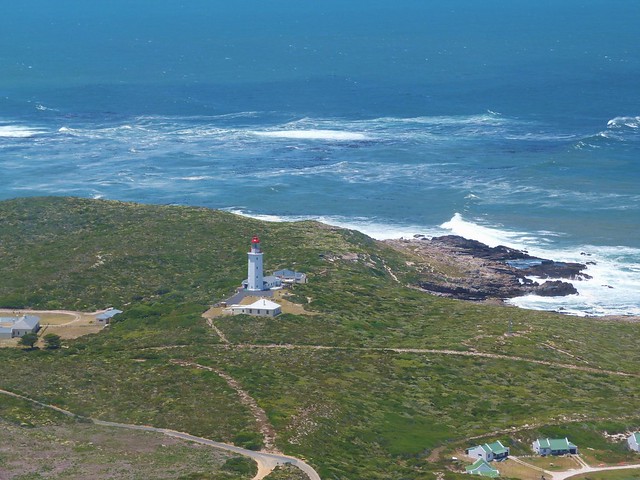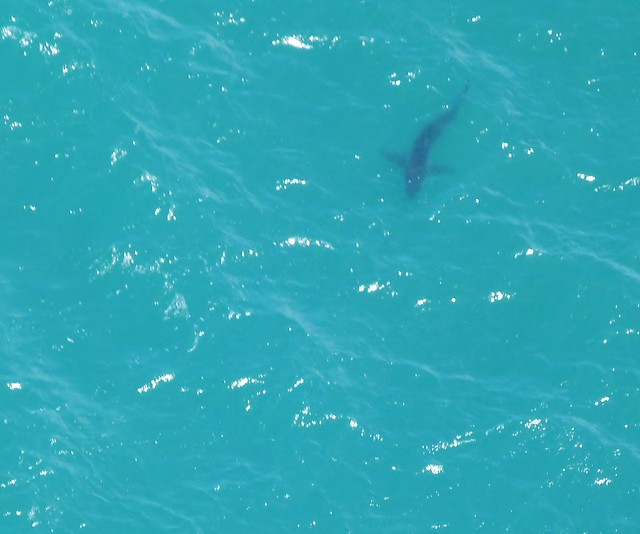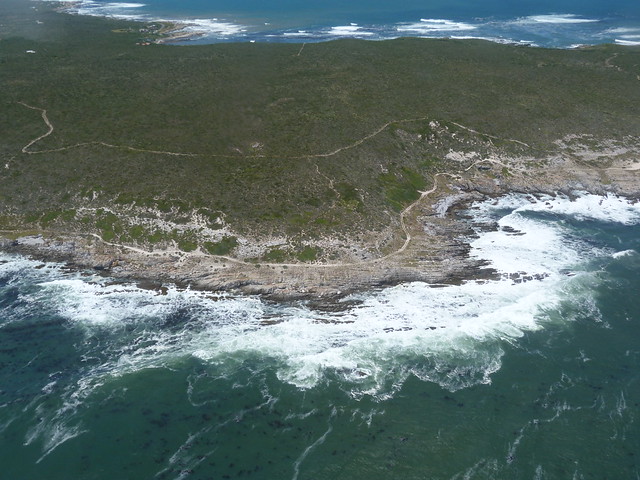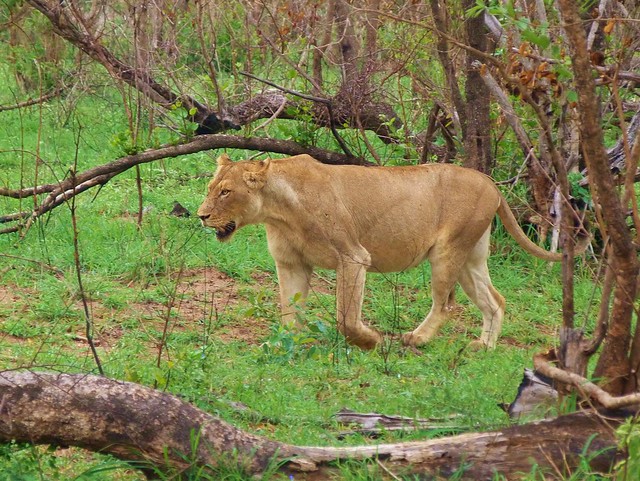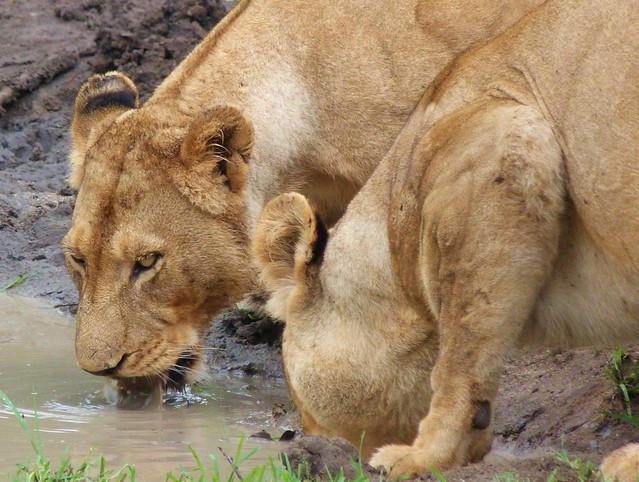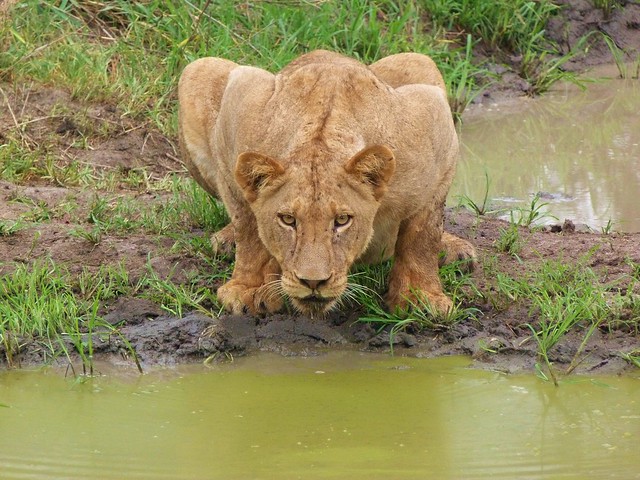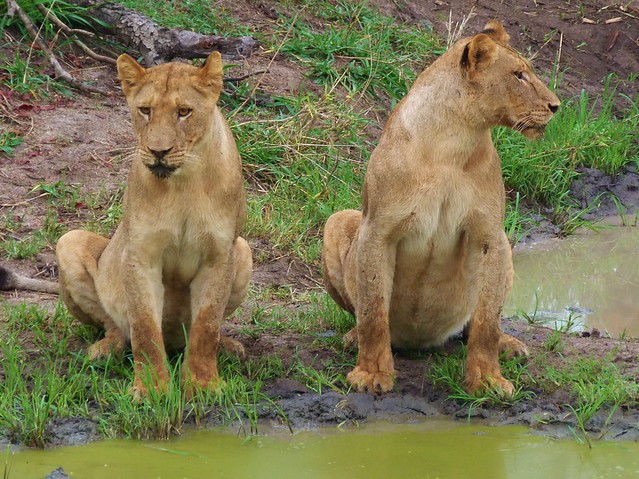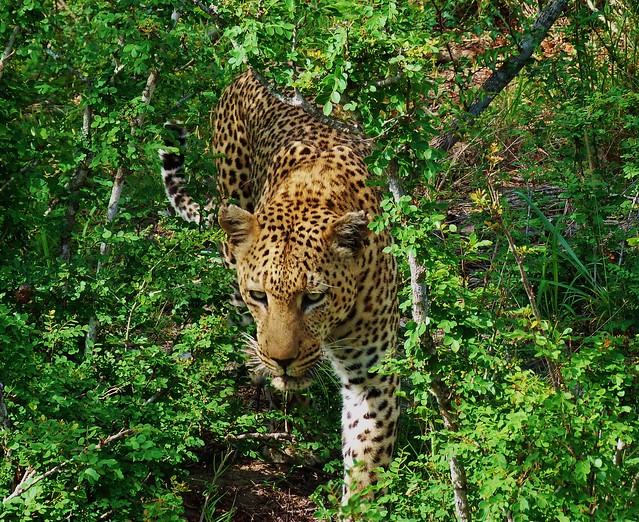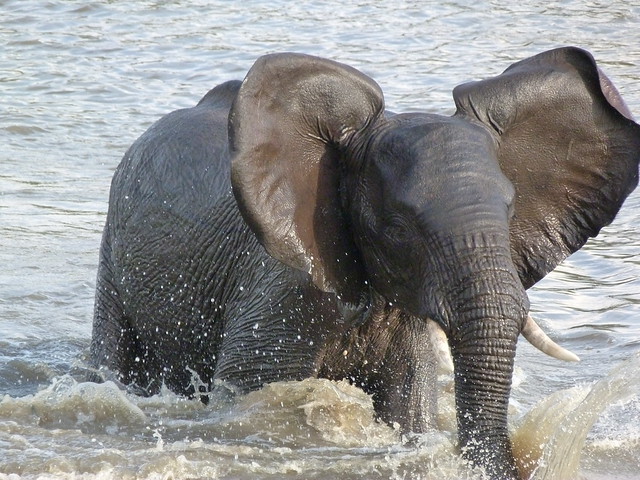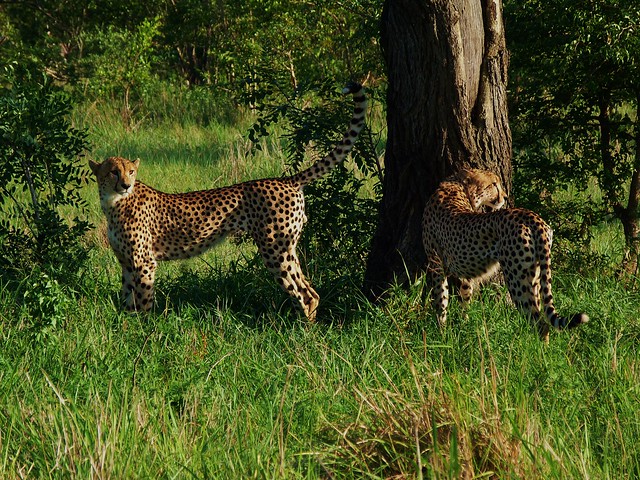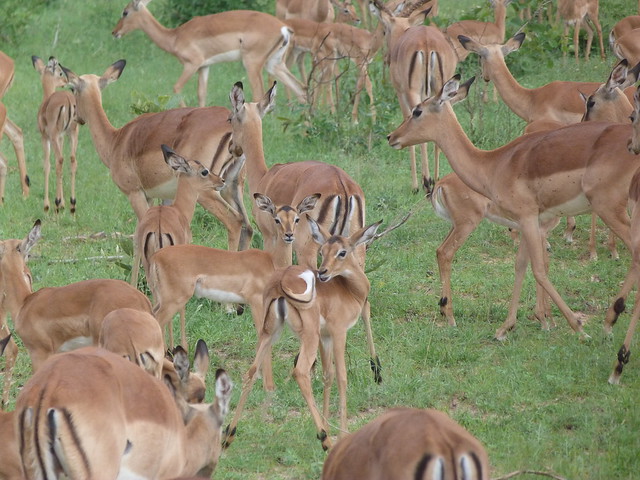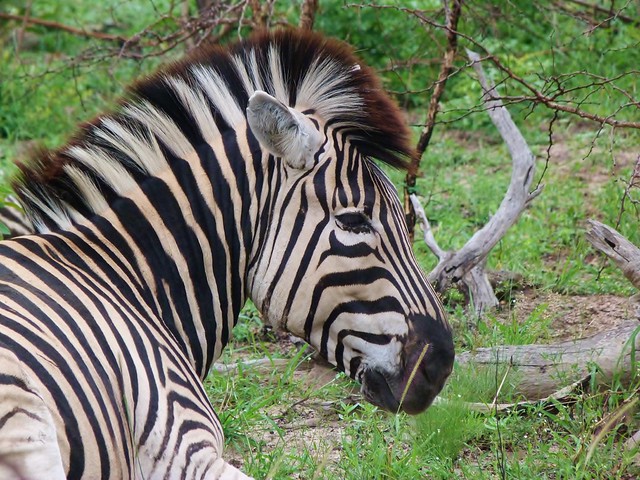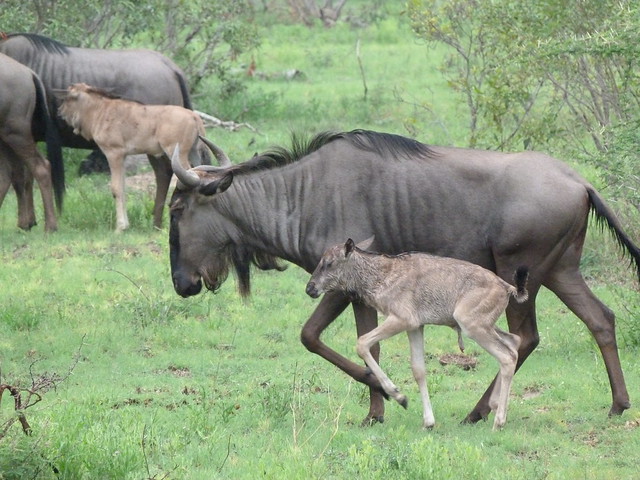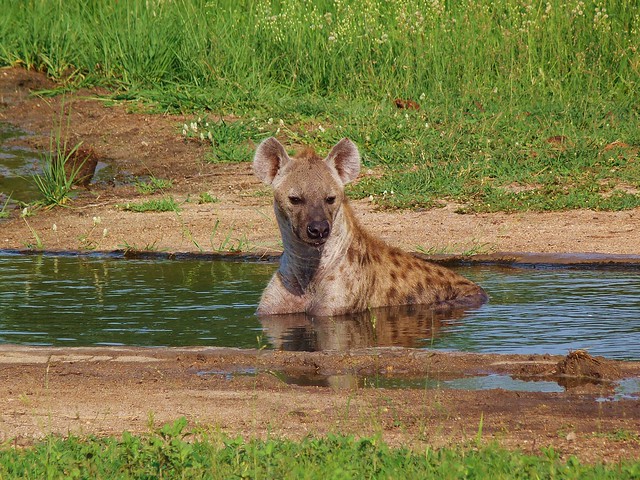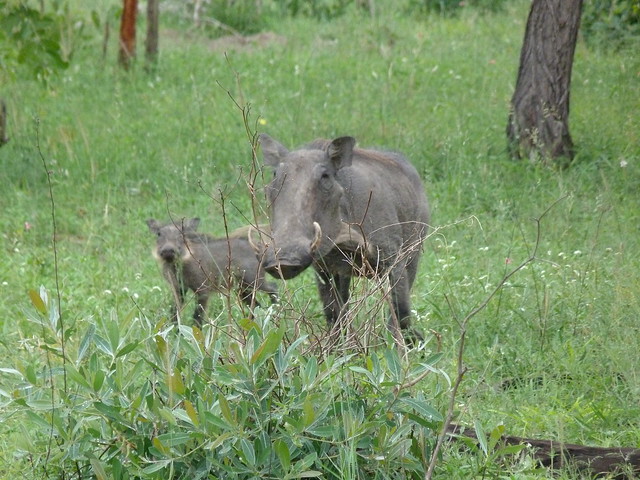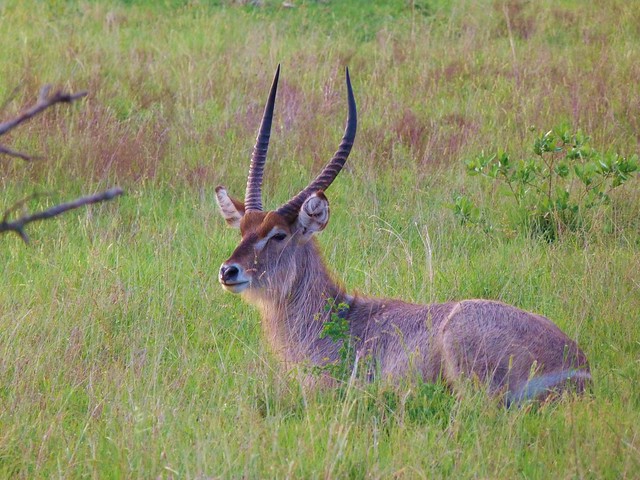The Kruger National Park is one of those places in Africa that anyone would be very strange that Noah's Ark had landed at the end of the flood. Located in the northeast of South Africa and with an area of 350 by 60 kilometers, adding acres could reach the size of Israel, Wales or the province of Caceres, has a dizzying number of animals. Wildlife in the Kruger has their own paradise with over 500 species of birds and 147 of mammals, considered one of the best parks in Africa to observe and photograph animals. This is where the word safari, which in Swahili means "journey" takes its full meaning and true nature lovers become children again to look with clear eyes that once saw on television and told him books . All who visited South Africa Kruger dream as the place to cradle you at night roars of lions and feel you constantly monitor the shrewd eyes sparkling leopard.
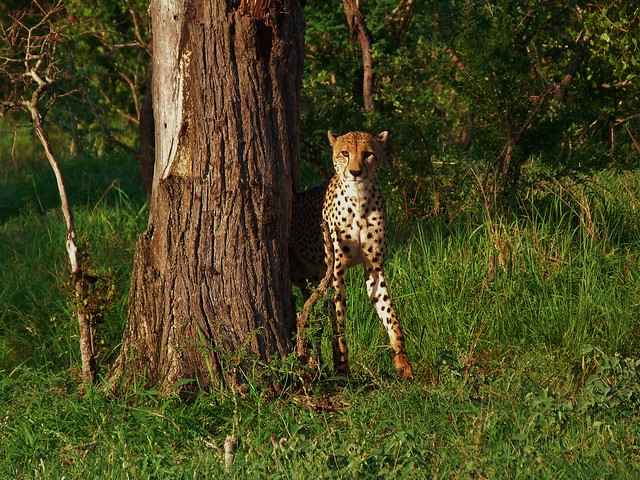
During my last trip to South Africa I had the opportunity to spend several days of photo safari in Kruger Park, specifically in the green plains of the Sabi Sand Private Reserve. Aboard an SUV witnessed one of the greatest displays of wildlife that have ever lived (and feel) in Africa. As luck, whose sole owner here is Mother Nature, it had agreed to make every outing a success. And I can almost ensure no one missed the appointment ...
I still remember what my first experience nature in black Africa. It took place in the Okavango Delta (Botswana) which have intact the image of a huge hippo out of the water and looking as if we were a speck of dust in the middle of the road. Premiere safari in South Africa is not bad because, although do not have the vast savannah of other countries such as Kenya and Tanzania, provide much more intimate scenes. Especially if you are the one driving the car, as the case of our group of friends in the neighborhood who decided to rent a 4 × 4 in Johannesburg and escape back in 2009 to Botswana, Namibia, Swaziland and company. But that trip, I remember him with great affection, I left with a thorn. He had not been in the Kruger National Park in South Africa, which is for many experts one of the peaks in terms of photographic safaris in Africa is concerned. So when the opportunity to travel years after this African country could not imagine not go through the Kruger without photograph the Big 5 emerged.
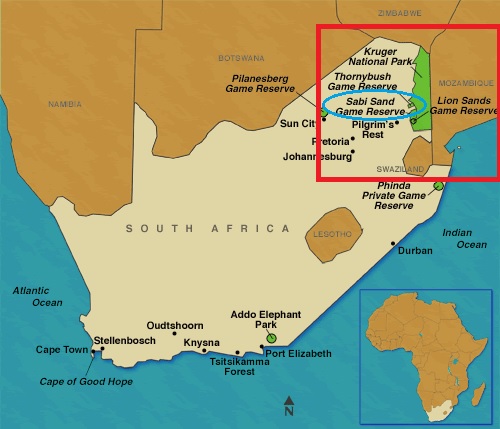
Sabi Sand and the esplanade of the Cheetahs
Nearly 19,000 km² is the protected area of the Kruger, which borders Zimbabwe to the north and Mozambique to the east in what comes to be regarded as a continuation of a transboundary park. Which it will be a real slaughter by ruthless hunters from the nineteenth century and well into the twentieth, firing their prey as that targets a trade neighborhood was saved in time before their original inhabitants disappear so final. Fortunately the years and the gradual awareness of the people involved the exchange of guns for cameras. And we can say today that the Kruger National Park is one of the most important wildlife havens in southern Africa.
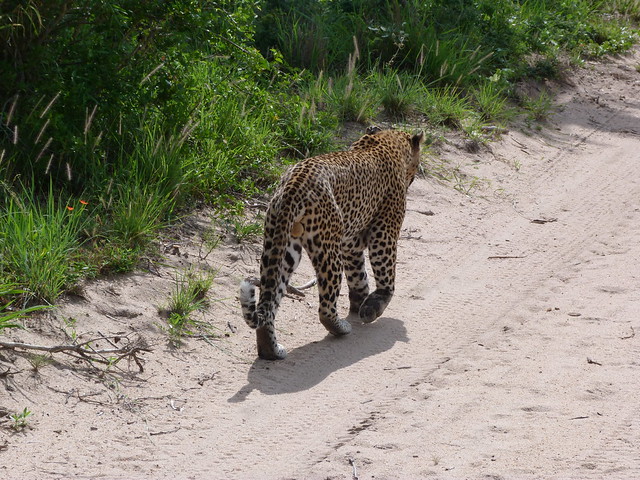
While most of Kruger's public area where visitors can make their own safaris independently, there are several privately owned reserves within the park where you can stay overnight and from there organize each of the expeditions. One of the most consolidated reserves here is Sabi Sand, with 65,000 hectares by passing two rivers such as the Sabi and Sand. There are a few lodges inside and the difference with the public area is that one always goes on safari with ranger at the wheel, there is never overcrowding of vehicles at the same scene (in Sabi Sand is only allowed will come to join three cars at the same time) and you can leave the marked paths.
Sabi Sand is recognized as one of the corners of the Kruger Park with a greater presence of fauna and stands out for its ease of viewing and photographing wild animals. Such 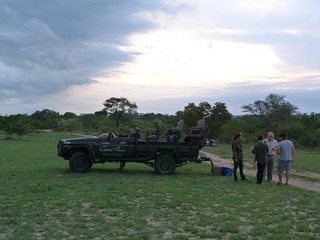 rating makes it worthwhile to consider laying the groundwork for a series of outputs which are usually made in the early morning and evening, ideal to spot a greater number of species, mostly are nocturnal moments here. No accommodation of different categories within the reserve and we were at Cheetah Plains (meaning esplanade Cheetahs), a fantastic lodge that will be the most expensive of the reservation was not lacking any detail. We heard it through,
rating makes it worthwhile to consider laying the groundwork for a series of outputs which are usually made in the early morning and evening, ideal to spot a greater number of species, mostly are nocturnal moments here. No accommodation of different categories within the reserve and we were at Cheetah Plains (meaning esplanade Cheetahs), a fantastic lodge that will be the most expensive of the reservation was not lacking any detail. We heard it through, Aventura Africa , the specialist travel to South Africa and other African countries who organized this expedition and featuring such bases its customers. Super equipped slept in huts on a site very type of Out of Africa. No wonder he would join an elephant dinner in the light of the moon or we we took the tea in front of a herd of buffalo taking a dip in the pond that looked from the pool. I never had the chance to experience a safari that and recognize that it is one of those luxuries that be worth at least once in life. You have to delve into the bank more than normal (about 200 € / day per person all inclusive) but the experiences they have made to compensate. There is disappointment in Sabi Sand and, of course, in a place like Chetaah Plains in which not only make you feel better than staying home with honor but also deal with organizing two departures a day (included in the price) for animals really prepared rangers (this is one of its greatest values) that are able to make you live an unforgettable safari.
In search of the Big Five Kruger
It is so motivating and fun set goals when you do a safari. Perhaps first of all that we got in Sabi Sand, in addition to entrust to chance, it was able to observe and photograph the Big Five. This name Big Five, from hunters seeking their most prized pieces, refers to a podium where is the lion, leopard, elephant, rhino and buffalo. Of course in the Kruger not need any of them. Some easier to see and more difficult, but with patience and time you can achieve the 100% target. We retrospectively accounts by each of the outputs we took from Cheetah Plains (twice daily) saw at least four of five, but ended the day without ever we hit these big five. Here is an example of this:
The lions were always kings
The lion is by far, my favorite animal. And many who go on safari. Run into them in the Sabi Sand Reserve or across the Kruger, without being the simplest in the world, is quite feasible possibility. In fact it is estimated that around the Kruger there are approximately 2,000 copies, although it should be remembered that in a space quite important. Lions in the top of the food pyramid in any African National Park that boasts, are among the few animals that are not seen just stressed, showing fully aware that their power is irrefutable. Maybe that's why males sleep sometimes more than twenty hours a day leaving the tasks of hunting for the real queens of the jungle, the lionesses. With these lazy hairy we stumbled once. There were two under a tree ... of course, were in full nap. But even with closed eyes proved impressive. The first time you see a male lion is not forgotten. Never.

But the most impressive and unforgettable scenes of our series of safaris Kruger Lionesses were starring. At first we saw a lone walking along a sandy path. It was swollen and his face was enough to be satisfied, according to the guide because the night had been alive well after eating a buffalo. We followed slowly, watching his big belly and filled eyes as piercing as mellow.
Suddenly they appeared from behind the trees four companions hunting. The car was then surrounded by no less than five lionesses for which there seemed to be more than a bump in the road. We stood behind the guide who did not ask us for any reason levantásemos (premise to ignore it costs when you have these wonders so close to you) and hope to see their stuff. Luck had allied with us. The five went to a nearby pond and began to drink at a time, leaving countless images to immortalize. And that one thing is to see lions and another to pose like that ...
One while traveling in search of the true nature and dreams of seeing animals in the wild, his dream with scenes like this. I know it depends on many factors and fortune, but I'm convinced that if you want something with many forces, ends up being true. And then you witness the absolute truth that exists, which speaks of life of all beings that inhabit our planet. Just for that look worth the effort. No attempt is in vain ...
The leopard wearing his best suit
For many, the leopard is the Big Five harder to see by far, although I have to admit that I've already found four safaris (at the gates of the Chobe in Botswana before our car broke down in the Yala National Park Sri Lanka and two of the four outputs which I am narrating Sabi Sand). It is silent as a shadow, hides in the vegetation and prey stealthily monitors from the top of a tree. You do not see until you have reached a foot from your face. Elegance is its flag and green eyes lock consciously and unconsciously in your memory.
While the first exit Sabi Sand we encounter one of them lying under a rock, it was not until the last day when we saw it in all its fullness. It was a surprise, as I was walking quietly along the trail that started from the lodge no more than one hundred meters from where we had spent the night. The first rays of sun caressing his back a few minutes of arriving at five in the morning. It was night when his return, probably unsuccessful because his mouth was not stained with the blood of one of their prey.

Andrew, our ranger, masterfully guessed his next steps and was ahead of the events. He knew exactly where our friend was. We traveled with him very slowly until a ravine with an almost dry pond and there appeared again the leopard, who remained silent while living semitumbado his mere presence. They were ten minutes, maybe fifteen, which were left over every word. Nothing better than reading their coat of stain and pray to Heaven we devote one of its paralyzing stares. Being in the house of one of the biggest leopards around the Kruger, according to the good of Andrew, it's not something you can do every day.
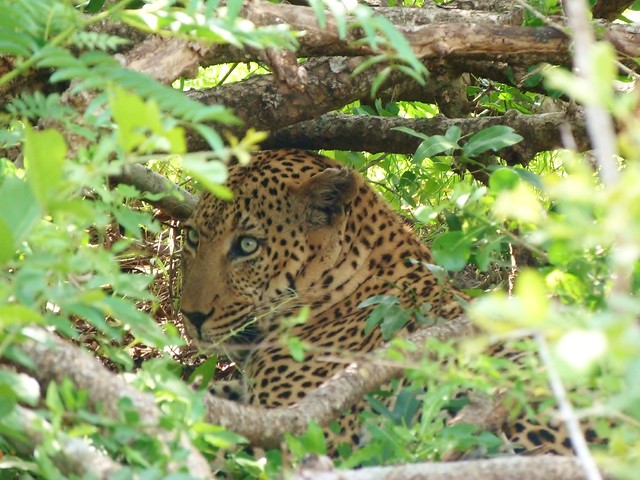
While we say goodbye to him as if we were to see him near the end of the safari, when we head into the next stage in Cape Town, appeared suddenly to the left of our vehicle. He left the comfort of the bushes and finally placed at a distance of a meter or meter and a half in the car door. Of all the times I'd seen him, none had been so close. We could hear her breathing while we were the ones that held our air.
Large herds of elephants waiting for us on the other side
They say the lion is the king of the jungle but neither he nor any of the animals that we see in the Kruger are stronger than the elephant (the largest and heaviest land mammal on the planet). There is no rival for him beyond the Human Trafficking with ivory. With an estimated 11,000 animals in the Kruger National Park population is one of the species belonging to the Big Five we saw not once but many times. Their size gives them away, and their habit of traveling in packs, except some specimens apart by the group that also reveal alone (said to be the most dangerous).
Of all the times we see elephants in our daily outings in the Sabi Sand Reserve specifically I stay two. The first coincided with bath time, when a good crowd gathered around a lagoon. Their games and splashing were a treat before our cameras you try to collect it was probably the best time of day for these large pachyderms.
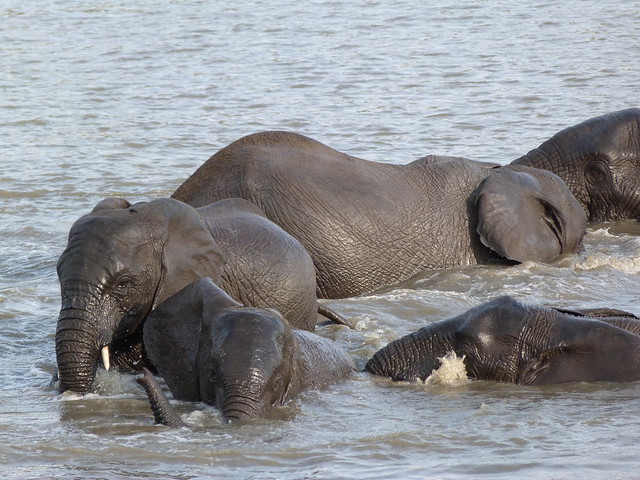
The second scene with elephants lived with which I stay is full of beauty. A group of five or six elephants had starring a baby that was less than six months to live. He was always with his mother, but sometimes insisted on trying to imitate his teammates, despite its small and weak trunk was unable to start one branch. There was a time when the mother gave us a reminder that mantuviésemos barrito distances, moving ears with great intensity. Until suddenly the little elephant stood in front of him and began to imitate the movements of his mother. It was the way he gain respect and communicate your intentions if we approached more than necessary. But the curious and visceral Dumbo pointing as good ways caused us more compassion than fear. Probably we were facing the most sympathetic, gentle and beautiful animal that had met us at our South African safari.
Rhinos, those antediluvian animals
Rhino is one of those species that take us back to prehistory and that bring to mind the term "antediluvian" that Charles Darwin applied to the curious Galapagos wildlife . The most imposing of the Big Five is, in turn, the most vulnerable, as their great curse comes from the horn that is started by poachers to satisfy stupid Eastern beliefs. More than 300 rhinos per year are slaughtered only in South Africa and if bleeding does not stop within twenty or than thirty years we will be regretting their extinction. So free to observe the large rhino is a prize whenever a safari to in these lands. Fortunately Kruger has 5000 (and about 300 blacks, on the verge of extinction) white rhinos, so the chances of meeting them here is higher than in other parts of Africa (also in Zambia, Zimbabwe, Namibia and Kenya.
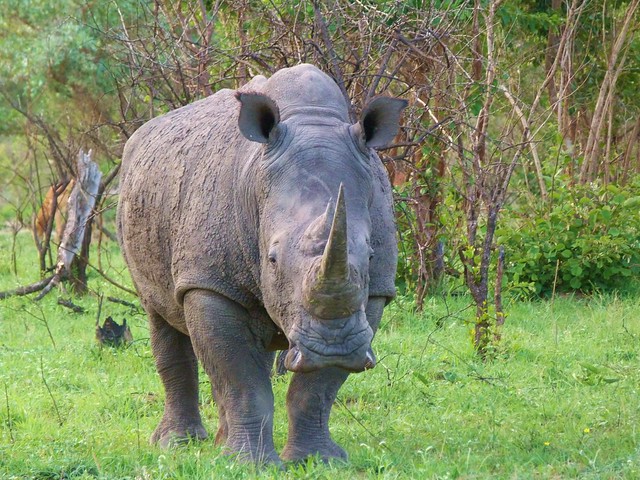
Of the four exits we did in Sabi Sand we had a 100% success with rhinos. Always we saw couples or even a third member of the team. As a true gift we could photograph them up close on several occasions. The qualifiers stunning and wonderful spun all our conversations when we had to face this mammal that can exceed three tons.
Buffaloes and large antlers
Big Five is the fifth Buffalo, who does not enjoy much fame as his four companions perhaps be one of the most numerous species easy to see in Africa. Only in the Kruger it is estimated that there are about 25,000. Almost always they go in herds, so when we find a solo can IRLE goodbye to this world because they will be days or hours to be doing the digestion in the stomach several hungry lions. What impresses Buffalo is obviously his antlers. The skull of this animal is exposed to form an effective weapon against pesky predators. The horns of the males are larger than females and it is noteworthy that team are very, very powerful. They are not just vulnerable as Thomson gazelles. If a lion will not have them victory assured.
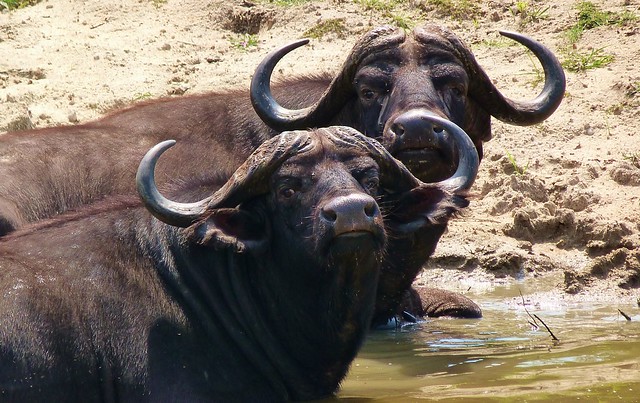
During all exits we did in our car Cheetah Plains saw them, but not needed if you want to leave the lodge to do. The pond is visible from the bar received daily visits ten large specimens (all males also) for a refreshing bath. Apparently it's a must in recent months in this place, also shared with a hippo with ingrained habits that kept a safe distance.
It does not take Big Five to provide memorable scenes on safari in Kruger
One of the big mistakes that happen in the safaris have to do with people who are obsessed with the Big Five, as if Savannah had no more animal species. You can not disdain to 97% of mammals and forget that more than five hundred species of birds fly over the blue sky that we see every day. Wildlife Kruger is so admirable that if there were five major would still have at our disposal unforgettable scenes with cheetahs, zebras, giraffes, hippos, hyenas, impalas, gazelles, wild dogs and a long list of honorary members capitalized PARK South Africa. And if not then will a sample with other animals that gave us most exciting experiences in each and every one of the days we spent touring the Sabi Sand Reserve, that's probably one of the best natural areas that are part of mythical Kruger.
That pair of cheetahs
I never had the chance to see the cheetah and Sabi Sand had to be the place where he could observe the elegance of the fastest mammal on the planet. For ten or fifteen minutes we had to look two cheetahs were brothers who were busy marking their territory on trees in their path. The time of day was outstanding and even the light was allied with us so that they can grasp in all its glory. What a couple of bellezones!
A sea of plain clothes impalas
Estimated 170,000 only in the Kruger, impala members is favorite lions, leopards, cheetahs and hyenas lunch. Some say they are just tender and delicious nuggets in the bottom of the food chain. Always they go in large groups and speed is your big gun, with the caution of all steps taken. November and December are prolific breeding for months and why we find many small (good news for predators) that are not separated from their mothers. Sometimes their presence is so large that seems to be a sea of impalas in full plain. Of course like the sites cleared to be alert to possible shocks and having to flee open field.
Something very strange is that Impalas when they detect a threat expand through glands on the feet with a strong smell well known by members of the species that serves as a warning against an imminent danger.
Where not reach giraffes ... it does not exist
When you go on safari one of the animals that like to see the whole world is the giraffe. Surprise from his walk to the characteristic long neck with the food arriving in the highest treetops. If it is estimated there are 12,000 giraffes in South Africa, more than 9,000 are citizens of the Kruger Park, so there is no better place in the country to run into this kind whose neck can measure up to two meters. While it is true that in our case we only saw giraffes on a couple of occasions, siéndonos more elusive than expected. True, the Kruger is a much more lush park that we imagine typical savanna in the Masai Mara in Kenya or the Serengeti in Tanzania, so we must trabajárselo a little more to see the animals.
Zebras, horses of the gods
It has always seemed to me that the Zebra is one of the most photogenic species on our planet. The horses of the gods, because man has never been able to tame and mount fairly well, always go in droves and apparently have stripes that mislead the lions, whose vision is not the best, and even to avoid bites tsetse fly. It was not the animals most watched while on safari in South Africa, maybe two or three times maximum. And when we did were almost always in the company of other species such as impala and wildebeest.
The wildebeest that had just been born
With 17,000 estimated in the Kruger members of wildebeest, along the buffalo and impala, larger presence in this park. Allied with zebras, impalas and gazelles are not a few enemies that prey voraciously, so that is always seen in groups and in flat areas and unobstructed to stay alert. Although we find wildebeest several times there was one that was very special. We saw a mother with a baby who had been born just a few hours ago, probably that night, and she still hung on its cord. This species and other herbivores in Africa, it takes just a few minutes to stand up completely and walking. They can not afford too many whims nor tranquility because they are extremely vulnerable to attacks from carnivores salivate just thinking snack that will give.
The hyena was given his morning bath
Hyenas, but they are reputed to know scavenger hunt well. In fact they are the most intelligent mammals of Africa and when working in groups get great results, although at first glance seem misshapen and clumsy animals (nothing is further from reality). Only we got to see a spotted hyena in four outings we did in Sabi Sand, although it is considered to have up to 2,000 copies around the Kruger National Park. The we find a swim with the body submerged in water and dedicating a gesture that could be translated as "But what do they do this here? I can not you give me a dip without anyone bothering me? "Quickly go elsewhere as it had occasion.
He had not had the opportunity to meet with a hyena from that night when we were lying on the Chobe Park in Botswana and had to camp in a clearing. It has been several years now since they were circling our tents and one of them came to approach us barely a meter and a half away as a server recorded with the camera shaking.
You never underestimate a hyena. Never. It is the strongest jaw jungle, surpassing even the lions.
Pumbaa the warthog
One of the funniest characters in the film The Lion King's Pumbaa, Timon the meerkat inseparable. It is a warthog (also written facocero) or what comes to be also a warthog, denomination set by the English when they realized that it is very prolific to have warts on the face. There are approximately 4000 in the whole Kruger, what makes him a possible sighting. We were able to photograph only once when he went with his brood.
These are, broadly speaking, some of the most beautiful scenes of wildlife to the extent we had making a photographic safari in the Kruger Park in South Africa or in the Sabi Sand Reserve if we specify a little more. He could have also mentioned other species that we saw kudu, hippos, waterbucks (waterbucks), lots of mongooses, osprey (white head, much like the bald eagle that appears in the shield of the United States) and even a civet night. You could say we were lucky in every way and we live with fascinating moments we had always dreamed of.
Fortune is an indispensable for a good safari the best condition, but just think we're in the home of these animals just go over together makes it worth a try. We also always be that African immense sky and highly harrowing landscapes that define a continent they say is black but remains a blank map of many travelers.
